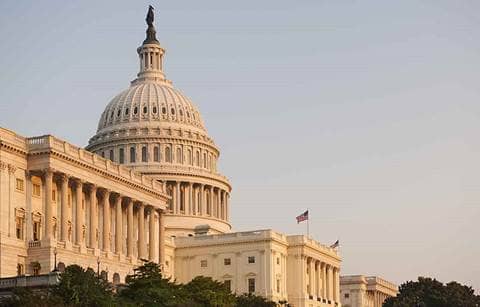On Feb. 27, 2021, the House of Representatives passed the American Rescue Plan Act of 2021. This bill now heads to the Senate for consideration and potential modification. The House bill extends and modifies many of the provisions that were first introduced by COVID-19-related legislation during 2020. Here are the key things to watch for.
Recent developments under the new Congress and White House
During January, the Biden administration was inaugurated and a new Congress was seated, with Democrats holding narrow majorities in both the House and Senate. At that time, Democratic leadership expressed an intention to pass further COVID-19-related legislation. That process was initiated in early February as Congress began consideration of the American Rescue Plan.The American Rescue Plan is currently being considered under the Congressional budget reconciliation process. This procedural mechanism allows legislation to advance on an expedited basis and pass the Senate with a simple majority. However, it includes several limitations on what can and can’t be included. For example, on Feb. 25, 2021, the Senate Parliamentarian ruled that a provision in the House bill to increase the federal minimum wage to $15 violated the procedural rules and couldn’t be included in the Senate bill.
The Senate is expected to take up the American Rescue Plan next week, and a final bill is expected during the first half of March. It’s possible that the Senate will consider alterations to the House bill or new provisions that haven’t yet been included. To the extent that the House and Senate pass different bills, then a reconciliation committee will be formed to draft a final bill for passage in both chambers. Despite the potential for changes in the Senate, it appears that the Senate may not alter many of the provisions contained in the House bill.
What’s in the House bill?
During 2020, Congress passed several bills to provide COVID-19-related support. The most significant tax provisions were initiated by the Families First Coronavirus Response Act (FFCRA) and the Coronavirus Aid, Relief, and Economic Security Act (CARES Act). Those programs were further expanded throughout 2020, including the most recent Consolidated Appropriations Act, 2021. The American Rescue Plan builds on the programs enacted in 2020, so much of the legislation will be familiar. Here are some highlights of significant provisions.
Incentives for businesses
- Paycheck Protection Program (PPP) loans: The American Rescue Plan would expand the eligibility of certain nonprofit entities and internet publishing organizations for PPP loans. It would also provide $7.25 billion in additional funding for the PPP.
- Restaurant Revitalization Fund grants: The American Rescue Plan would create a new assistance fund administered by the Small Business Administration for restaurants and other places of business in which the public or patrons assemble for the primary purpose of being served food or drink. The grants from this fund would be limited to $10 million per entity, with a limitation of $5 million per physical location. The eligibility requirements and use of funds are similar to PPP loans, but there are key differences in the programs. In addition, the grants are excluded from taxable income in a similar manner as PPP loan forgiveness.
- Employee Retention Credit: The bill would extend the employee retention credit from its current expiration date of June 30, 2021 to Dec. 31, 2021. The American Rescue Plan would also modify the payroll taxes against which the credit is creditable, but this isn’t expected to result in any significant changes to the program overall.
- FFCRA credits: The American Rescue Plan would extend payroll credits for COVID-19-related paid sick leave and paid family leave. The FFCRA imposed a mandate for certain employers to provide paid leave, but that expired on Dec. 31, 2020. The CAA provided a limited extension of the credits until March 31, 2021, but didn’t extend the mandate to provide such leave. The American Rescue Plan would continue this trend by extending the credit for paid leave provided through Sept. 30, 2021, but employers wouldn’t be required to provide such leave. The bill would also: (1) increase the amount of wages and maximum number of days on which the credit can be claimed; (2) provide credits for leave related to COVID-19 vaccination; (3) impose nondiscrimination rules with respect to highly compensated employees, full-time employees, or employment tenure; and (4) change the payroll taxes against which the credit is refundable.
- Corporate interest allocations: The American Rescue Plan would repeal the election under Section 864(f). That election allows members of a worldwide affiliated group of corporations to allocate and apportion their combined interest expense among their members.
Incentives for individuals
- Recovery rebates: The American Rescue Plan would provide additional direct payments of up to $1,400 for individual taxpayers, $2,800 for married couples filing jointly, and $1,400 for each qualifying child. These would be subject to phaseouts based on the adjusted gross income (AGI) of the taxpayer. For example, a single taxpayer would begin the phaseout at $75,000 of AGI and would be fully phased-out at $100,000. Similarly, married taxpayers filing jointly would be subject to a phaseout on AGI between $150,000 and $200,000. The rebate payments would be made based on the taxpayer’s most recently filed 2019 or 2020 income tax returns. As a result, the timing of a 2020 tax return filing may impact the amount of payments received.
- Child Tax Credits: The bill would significantly expand the Child Tax Credit and accelerate payments for 2021. The maximum credit would increase to $3,000 per child ($3,600 for children under 6), and the maximum age would increase to 17 for 2021. The Treasury Department would also be directed to make advanced payments of the credit on a monthly or other periodic basis beginning after July 1, 2021. Those payments would be based on the taxpayer’s 2019 or 2020 income tax returns. The credit would be subject to a phase out, but a special rule would prevent taxpayers below a certain income threshold from being forced to repay any excess credits paid in advance.
- Earned Income Tax Credits: The American Rescue Plan also expands the Earned Income Tax Credit in several ways. Generally, the credit percentage would be expanded and the phaseout thresholds increased. Modifications would also be made to expand the pool of eligible taxpayers.
- Child and Dependent Care Tax Credit: The bill would temporarily increase this credit by increasing the allowable expenses, increasing the credit percentage, and increasing the phaseout.
The American Rescue Plan also includes many other non-tax provisions, such as funding for state and local governments, extension of unemployment benefits, expansion of Medicaid coverage, and rental assistance funding for qualified households.
What’s next?
Democratic leadership in the Senate has indicated that the American Rescue Plan will be considered on an expedited basis. However, any substantive changes in the Senate will likely delay final passage by a few days or even weeks. In the interim, we will continue to monitor developments as this bill takes shape.





